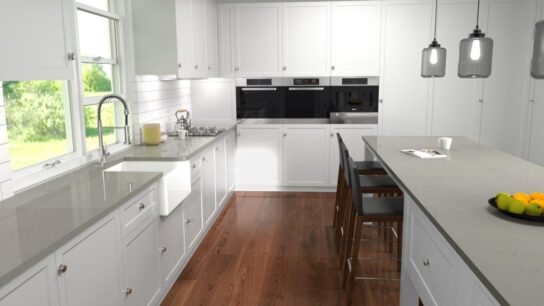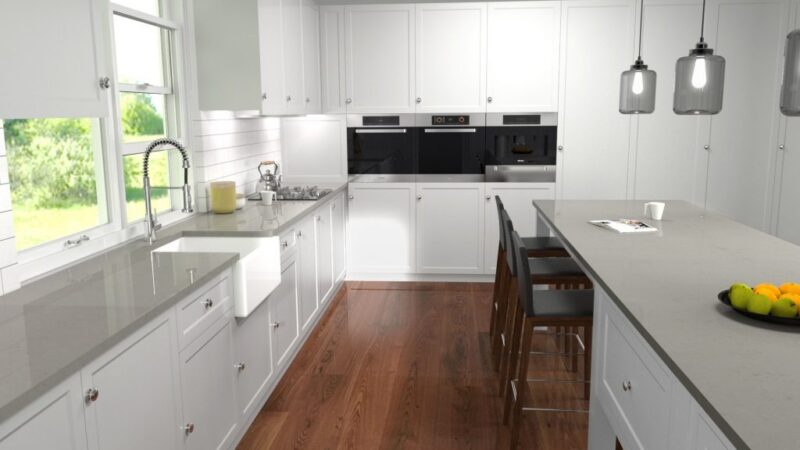Laser welding is a reliable method for joining aluminum due to its precision, speed, and ability to create clean welds with minimal distortion. It is an advanced welding technique that uses a high-intensity light beam to join metal parts. Like in traditional welding, the light beam melts the metal during this process, followed by fusion and eventual cooling. However, this process is automated, delivering high-level production while maintaining quality.
While aluminum’s inherent properties make it excellent for manufacturing, they are challenging for laser welding. For example, its high thermal conductivity, quick oxidation, and reflectivity may alter the process, reflecting the lasers and producing weaker welds. This feature makes laser welding aluminum a less efficient method. In addition, aluminum has a low melting point, making it susceptible to cracking.
With all these possible challenges during aluminum laser welding, it is necessary to take precautions. This article contains tips for getting the best results when laser welding aluminum.
10 Tips for Better Laser Welding Aluminum Results
We have already briefly overviewed the challenges associated with laser welding aluminum. Here are 10 tips for optimizing this welding process for the best results. By adhering to these tips, you can be assured of getting improved weld quality and overall efficiency.
Ensure Proper Material Preparation
Surface preparation is necessary for a successful aluminum weld. Ensuring joint surfaces are clean from all contaminants like dirt, oil, and grease is essential. Aluminum naturally forms an oxide layer that can impede welding and lead to porosity or weak joints. The oxidized layer must be removed using chemicals like acetones or mechanical methods like wire brushing and abrasive blasting. You must clean the material properly and prepare the joint before welding to ensure a more consistent and strong weld.
Preheat the Aluminum Material
Aluminum is known for its high thermal conductivity, which may make it challenging to maintain the necessary heat in the weld area during laser welding. Preheating the material before welding can help stabilize the temperature, reduce the risk of cracking, and improve weld penetration, especially in thicker aluminum materials. For thicker aluminum parts, it is advisable to consider preheating at about 300 degrees Fahrenheit to reduce thermal stresses during welding.
Optimize Laser Power
Getting the right laser power balance is crucial for aluminum, as using the wrong power settings may lead to welding defects. Since aluminum has high thermal conductivity, too much laser power can cause excessive melting or warping of the material. On the other hand, using too low aluminum power can lead to incomplete weld penetration.
Therefore, to prevent this error, the welder should optimize the laser’s power based on the metal’s thickness and the desired weld characteristics. It is also advisable to perform test welding on the material before proceeding. This will help you find the right combination of power and speed for your specific aluminum thickness and alloy.
Optimize Laser Speed
Welding speed is another crucial factor to consider when laser welding aluminum. If the welding speed is too fast, the weld might lack penetration, leading to incomplete weld penetration. In contrast, if the process is too slow, it might lead to excessive heat buildup within the material.
Therefore, it is essential to adjust the laser speed to match the thickness of the material. This will help balance laser power penetration and heat input. The recommended welding speed is 25 to 100 inches per minute (IPM). Thicker materials require a lower speed limit for better penetration, while thinner aluminum materials require faster speed to prevent overheating.
Optimize Heat Input
Optimizing heat input during the welding process is necessary, as excessive heat can lead to the deformation of aluminum, especially for thin materials. Therefore, the welder must control the heat input by adjusting laser power and speed. Depending on the aluminum material and the welder’s expertise, they should consider using either pulsed laser welding or continuous wave welding.
In addition, pulsed laser welding is more suitable for thinner aluminum material because it reduces distortion risk and minimizes the heat-affected zones. On the other hand, continuous wave welding is more suited for thicker aluminum material or high-speed welding. Continuous wave welding ensures consistency and deeper weld penetration in thicker aluminum materials.
Use the Right Wavelength for Aluminum
Laser welding aluminum requires a specific wavelength for optimal energy absorption. Aluminum reflects most of the laser’s energy, especially in the infrared spectrum. For better results during the welding process, choosing a fiber or disk laser is advisable, as they have shorter wavelengths of about 1.06 microns, as opposed to using CO2 lasers.
Control Shielding Gas Properly
While shielding gas is often considered unnecessary in laser welding, we recommend using one when working with aluminum. However, you must ensure optimum control of the shielding gas during welding, as using unsuitable shielding gas can cause porosity and other welding defects. Argon is the most commonly used shielding gas for aluminum laser welding because of its inert properties and ability to protect the weld pool from contamination. You can also consider using a mixture of helium and argon to improve stability and penetration, especially when welding thicker aluminum materials.
Choose the Right Filler Material
Again, filler material may not be compulsory when laser welding. However, it becomes necessary when there is a need to bridge gaps between joints or when working with dissimilar materials. Regardless of the situation, you must still go the extra mile to select an appropriate filler material. The choice will determine your weld strength.
The right filler material will help prevent cracking, compensate for differences in thermal expansions, and facilitate a smooth and quality weld. To maximize the benefits of using a filler, ensure it is compatible with the base material. It is advisable to consider using a 4043 or 5356 aluminum filler to improve weldability and strength.
Adjust Focus for Deep Penetration
The focal point of the material plays a significant role in determining weld quality. For deep weld penetration, the laser focus needs to be precise. A narrow focal point will help concentrate the energy, enabling deeper and cleaner welds. However, an overly tight focus may lead to overheating. When welding aluminum, it is advisable to focus slightly below the material’s surface to enhance penetration and reduce reflectivity. Adjusting the focus spot size based on material thickness is also necessary to achieve the correct penetration.
Pay Attention to Joint Design
The joint design plays a vital role in the success of laser welding. Aluminum is highly reflective, and improper joint preparation can lead to weld alignment, reflection, and porosity issues. Appropriate joint preparation helps ensure a stable and consistent weld. It is crucial to avoid machining methods that leave a smeared surface, as contaminants can easily be pushed under the joint’s surface. You can make use of a butt joint or lap joint with minimal gaps to allow for better energy transfer and reflection issues.
Monitor for Porosity and Cracking
Porosity is typical in aluminum laser welding due to trapped gasses and insufficient shielding. Cracking can also occur due to high thermal stress during cooling. Therefore, you need to monitor the weld quality during and after the process, which can help detect potential defects early. In fact, you may need to use real-time monitoring tools to track weld quality and check for porosity and cracks in the material. Ensure you always inspect the weld after completion for any sign of defect, which helps detect potential issues early on.
Conclusion
Laser welding aluminum offers numerous benefits for manufacturers looking for precision, speed, and high-quality welding. However, because of aluminum’s properties, it comes with its challenges. Careful monitoring is required to reduce risks of defects or deformation during welding. However, you can achieve strong, clean, defect-free aluminum welds by optimizing laser settings, preparing the material correctly, and heat control, among other tips.



